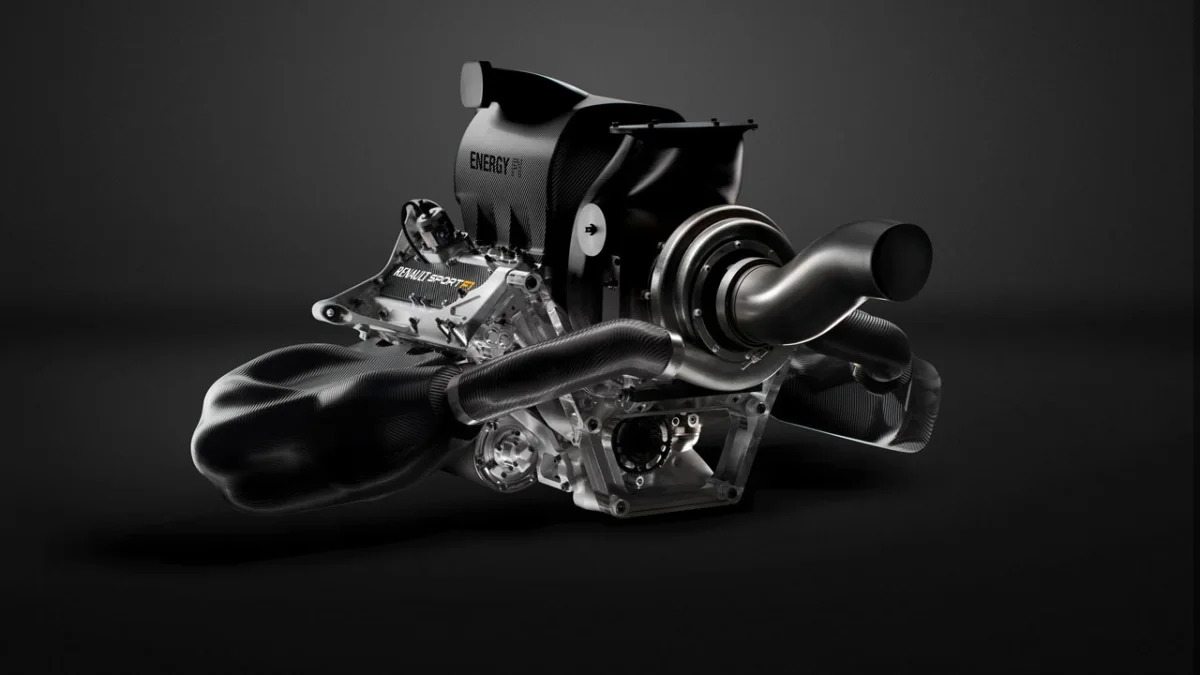It's plain to see that Mercedes developed a better engine than its rivals for the new V6 turbo era that kicked off this past season. The works team absolutely dominated the 2014 Formula One World Championship, and the independent teams the manufacturer supplied last season performed admirably under Silver Star power. Citing an unfair advantage, the other engine suppliers pressed the FIA to "unfreeze" engine development so that they could catch up, but while the motorsport governing body hasn't exactly acquiesced to their demands, a loophole in the regulations may give them at least some of the latitude they need.
The regulations allow the engine suppliers to perform a limited scope of modifications during the off-season, but while the intent was to mandate all the changes be completed before the start of next season, it turns out that intent wasn't specified in the actual wording of the rulebook. As a result, Ferrari and Renault (as well as Mercedes) will be allowed to make modifications to their engines – within specific confines – throughout the season.
Those confines come down to "tokens" under which the FIA has grouped the engine components. There are 66 tokens in all, 5 of which will remain completely "frozen" from modification. The remaining 61 can be modified as needed, but a manufacturer can only actually tinker with 32 of those tokens of their choosing – amounting to roughly 48 percent of the power units for next year. Over the following seasons that percentage will drop, according to analysis published by Autosport – to 38 percent for 2016, 30 percent for 2017, 23 percent for 2018 and 5 percent for 2019 and 2020. That is, assuming the same engine regulations are still in place by then.
Now if you're looking at those three engine suppliers (Ferrari, Renault and Mercedes) and wondering about the fourth, you're on to another catch. Cosworth dropped out of the series last year, leaving only those three, but Honda will be joining the grid with McLaren for next season. The Japanese manufacturer, however, will be required to submit its final design by February 28 – the same date, one year later, on which the existing suppliers were forced to finish their engines last year. So while Honda is naturally enjoying a bit of an advantage by developing its engine from the ground up (with the benefit of having observed how its rivals performed this past season), it won't have the flexibility of modifying its engines as the season progresses.
The regulations allow the engine suppliers to perform a limited scope of modifications during the off-season, but while the intent was to mandate all the changes be completed before the start of next season, it turns out that intent wasn't specified in the actual wording of the rulebook. As a result, Ferrari and Renault (as well as Mercedes) will be allowed to make modifications to their engines – within specific confines – throughout the season.
Those confines come down to "tokens" under which the FIA has grouped the engine components. There are 66 tokens in all, 5 of which will remain completely "frozen" from modification. The remaining 61 can be modified as needed, but a manufacturer can only actually tinker with 32 of those tokens of their choosing – amounting to roughly 48 percent of the power units for next year. Over the following seasons that percentage will drop, according to analysis published by Autosport – to 38 percent for 2016, 30 percent for 2017, 23 percent for 2018 and 5 percent for 2019 and 2020. That is, assuming the same engine regulations are still in place by then.
Now if you're looking at those three engine suppliers (Ferrari, Renault and Mercedes) and wondering about the fourth, you're on to another catch. Cosworth dropped out of the series last year, leaving only those three, but Honda will be joining the grid with McLaren for next season. The Japanese manufacturer, however, will be required to submit its final design by February 28 – the same date, one year later, on which the existing suppliers were forced to finish their engines last year. So while Honda is naturally enjoying a bit of an advantage by developing its engine from the ground up (with the benefit of having observed how its rivals performed this past season), it won't have the flexibility of modifying its engines as the season progresses.










Sign in to post
Please sign in to leave a comment.
Continue